New Look, BMC and Japanese track bikes spotted at the World Championships
France and Japan aboard wild-new wide-stance bikes, plus new BMC glimpsed at the track centre in Glasgow
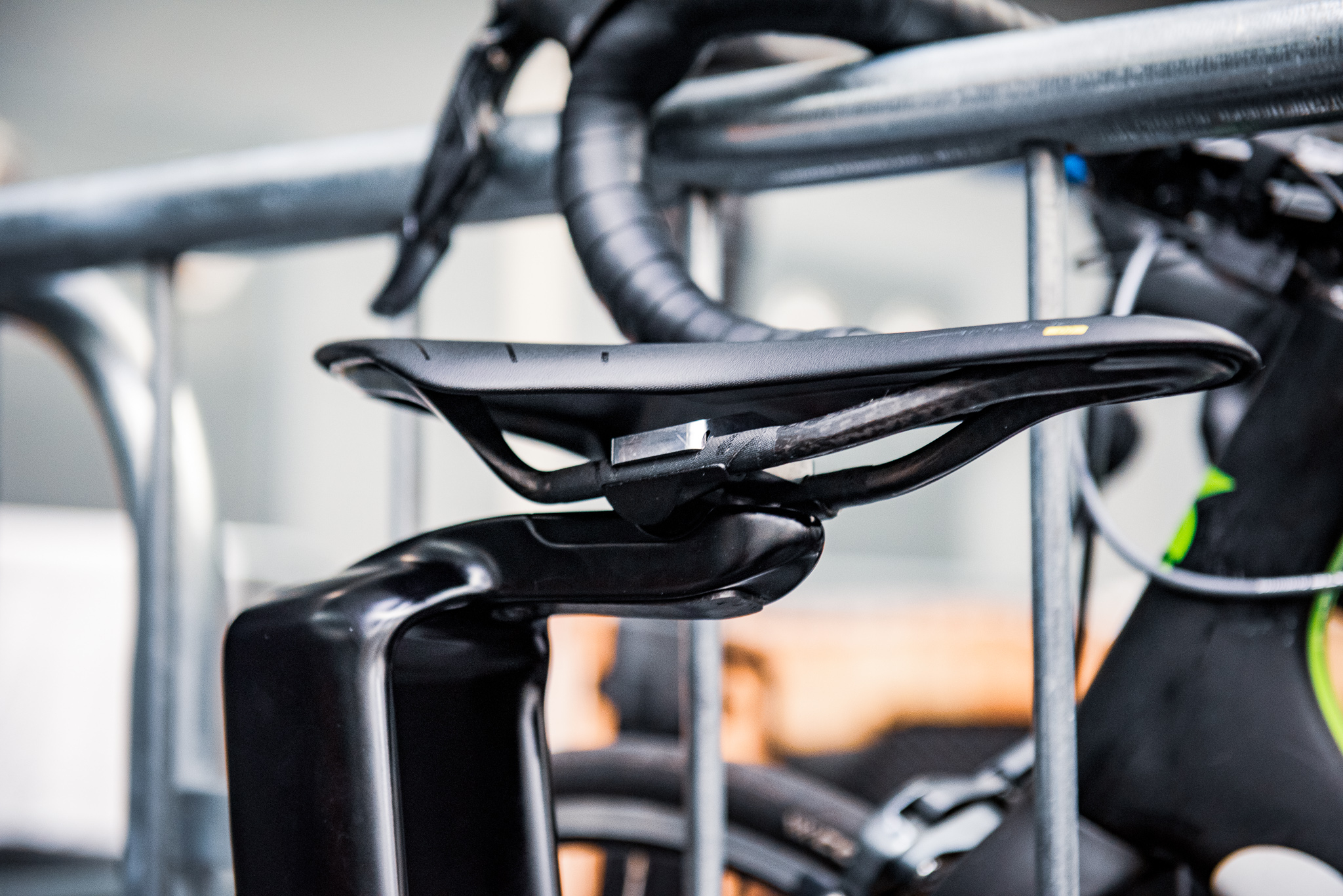
With the UCI World Championships well underway, there's a hoard of new tech breaking cover in Glasgow, and nowhere more abundantly than on the track in the Sir Chris Hoy velodrome.
We've already covered the official unveiling of the Canyon Speedmax CFR Track, which was developed in conjunction with Chloe Dygert, as well as the same brand's unexpected sourcing of tartan paint.
Today, though, Cyclingnews editor Peter Stuart has been track centre, and has spotted a trio of new bikes. Among them a pair of wild-looking, wide-stance bikes courtesy in the French and Japanese camps respectively. Plus there's a new BMC, which we managed to glimpse despite being kept partially under wraps by nearby mechanics.
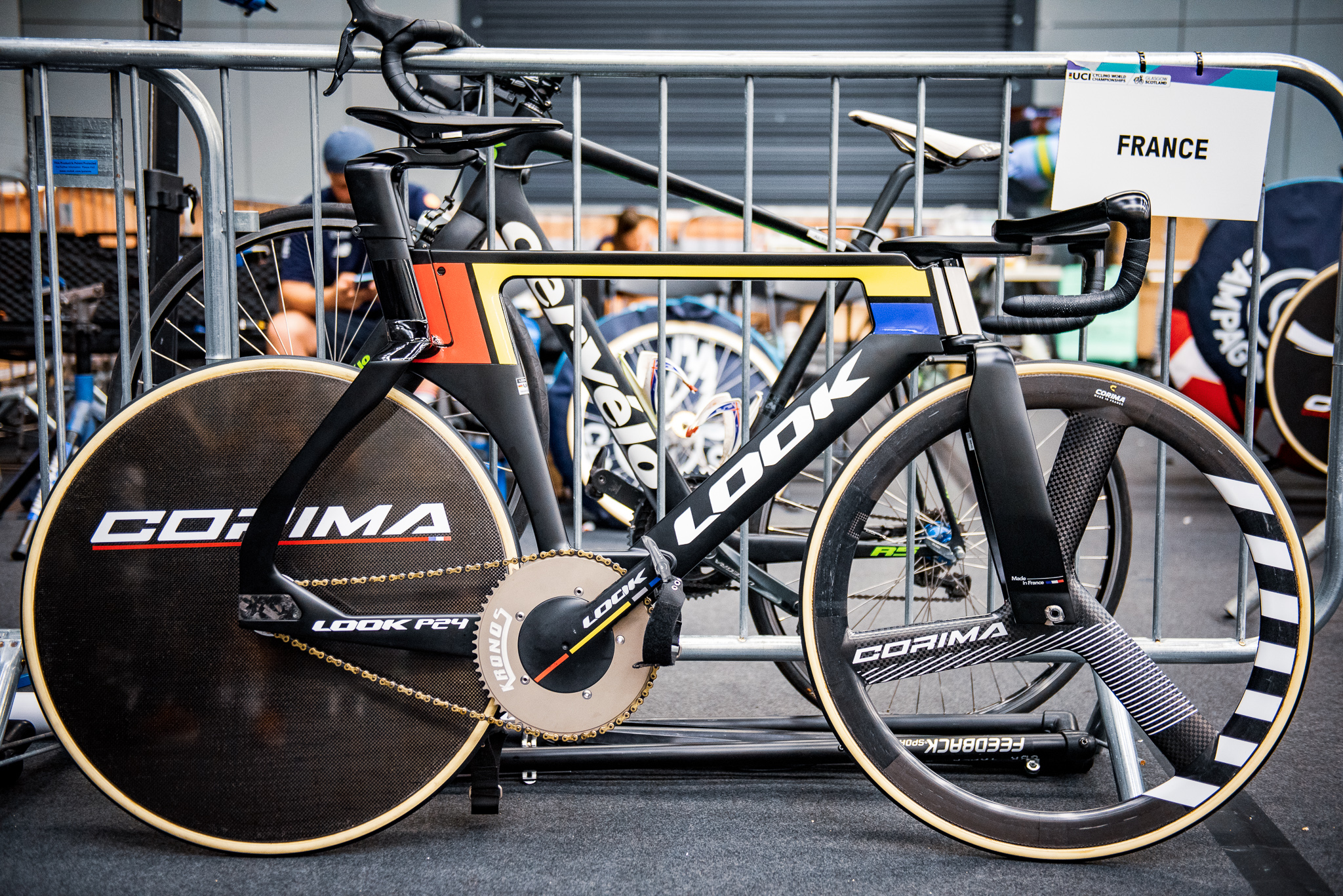
New Look P24
We'll start with France, where there appears to be a brand new bike from the French brand Look. According to a sticker on the chainstay and notes found in the UCI's List of Equipment Registered for Inspection in Glasgow, this will be known as the P24. It will replace the T20, and we can logically conclude the '24' relates to the next Olympic year of 2024.
Somewhat reminiscent of the Hope HB.T, which itself received an update last week, the Look P24 is fitted with ultra-wide-stance fork legs and seat stays. Also like the Hope bike, it sees a two-pronged seatpost, but the design here is significantly more integrated into the design of the overall frame.
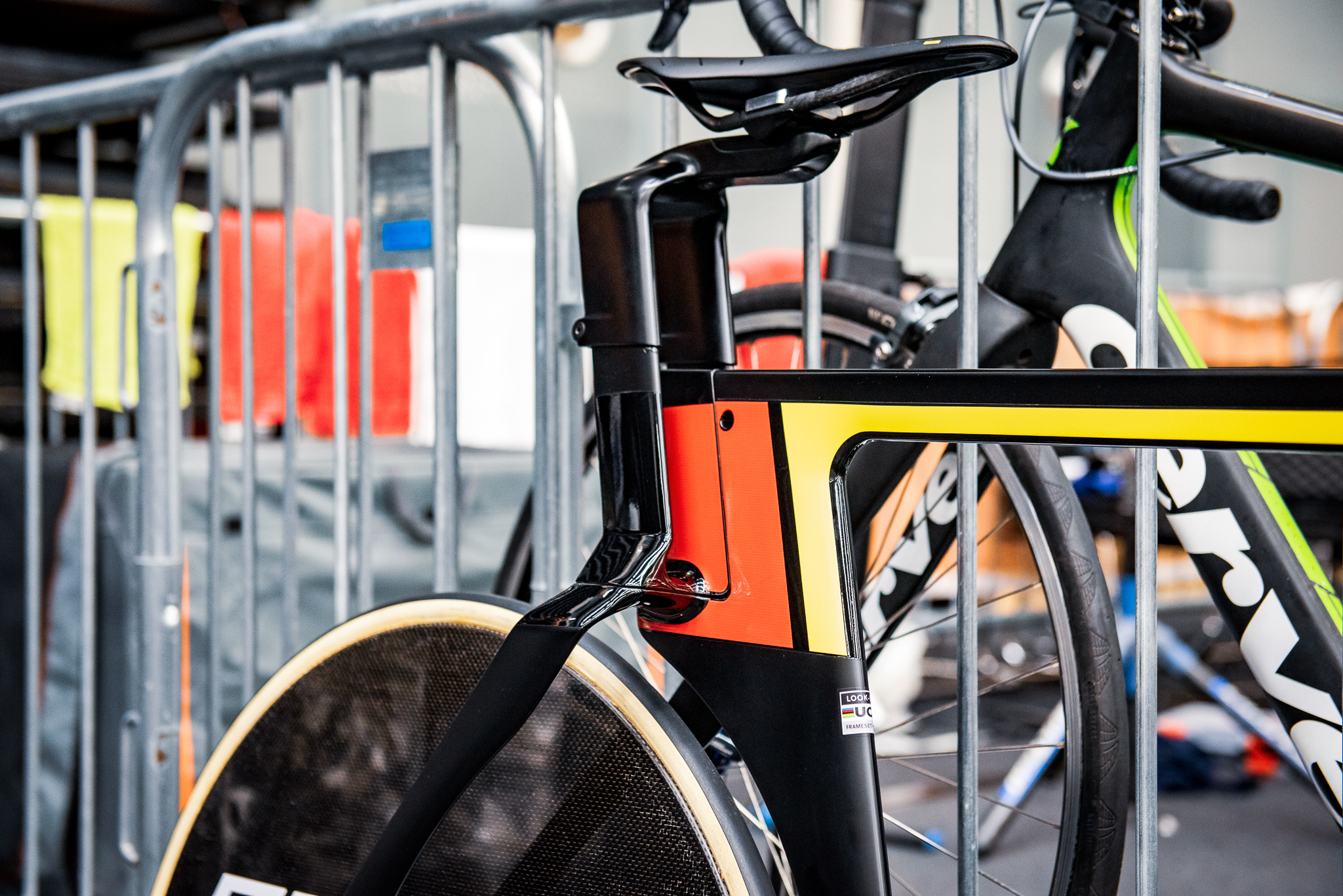
The seatpost itself is actually a seatmast topper which slides over the two upward-facing masts that protrude out in a continuation of the rear seat stays. We've also spotted a wild-looking forward-facing horizontal seatpost design, which effectively puts the seatpost further backwards behind the rider's legs, rather than directly above the seat tube.
It also appears that the seatmast section can be removed from the rear of the frame, perhaps suggesting that this can also accommodate a more standard single-prong seatpost or seatmast construction.
Get The Leadout Newsletter
The latest race content, interviews, features, reviews and expert buying guides, direct to your inbox!
Unsurprisingly, every tube on the frame, including the brace of seatposts and the wide-stance fork legs are hyper-deep in their profile. We don't know for sure without measuring, but would speculate that Look has taken advantage of the UCI's relaxation of frame tube profile rules.
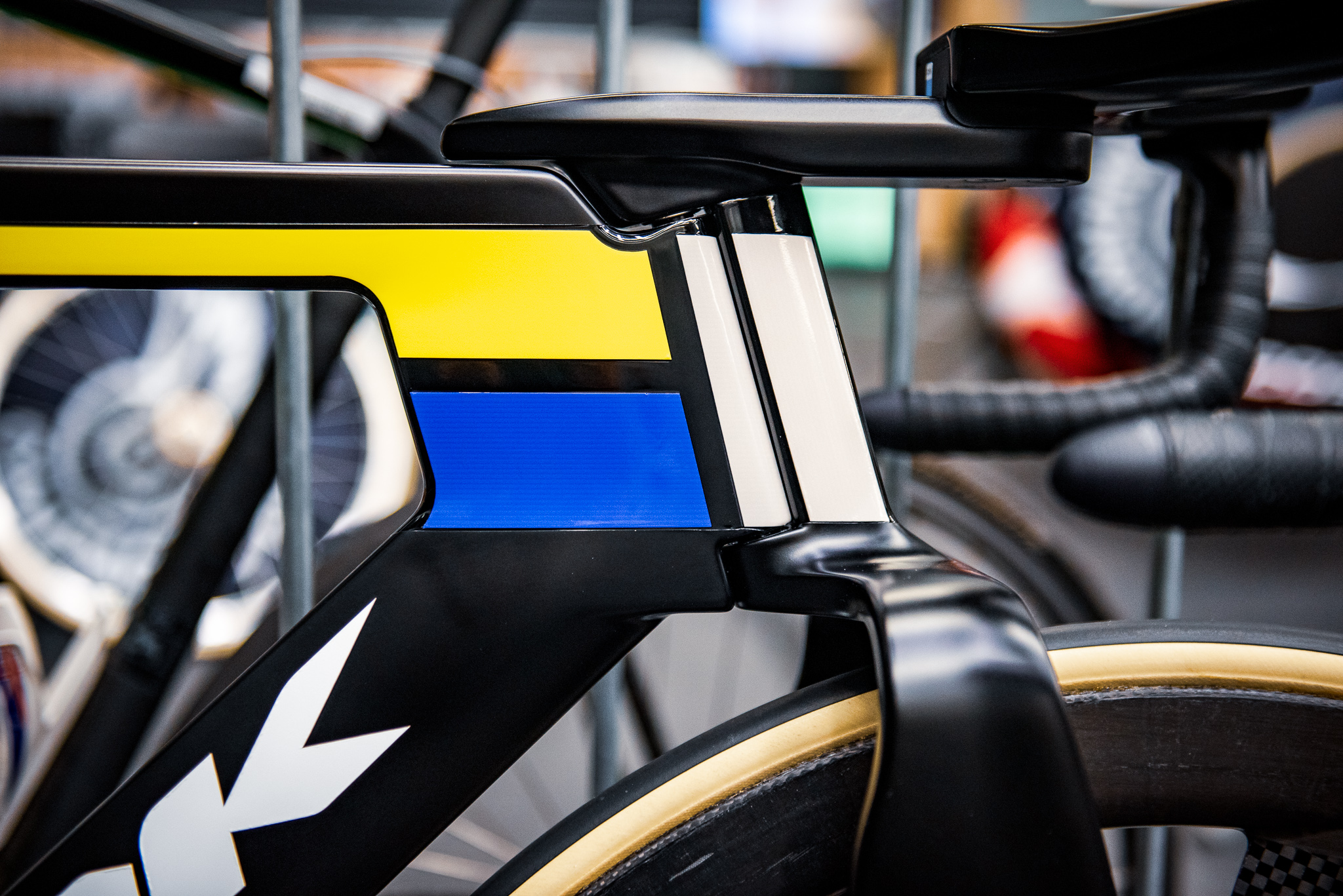
Up front, interestingly, the wide-stance fork legs end in the more conventional position at the crown, beneath the head tube of the frame, rather than continuing upward around the head tube as seen on the Hope.
The fork connects to the frame in a bayonet-style fitment, putting the steerer tube in front of the head tube and connecting to it at both the top and bottom. This is similar to the outgoing T20, and is also a design used by the Cervelo S5 aero road bike.
In the racing we've seen to date, the P24 has been used in both pursuit (with time trial aero bars) as well as in bunch racing (with drop handlebars) setups.
Upon our closer look, we only saw the bike with the drop handlebars, but it would appear that via the four torx bolts and an indentation on what is effectively the stem, this same frame can accommodate both disciplines with a handlebar switch. This is made easier by track bikes' omission of gears and brakes, meaning no cables to re-route when swapping.
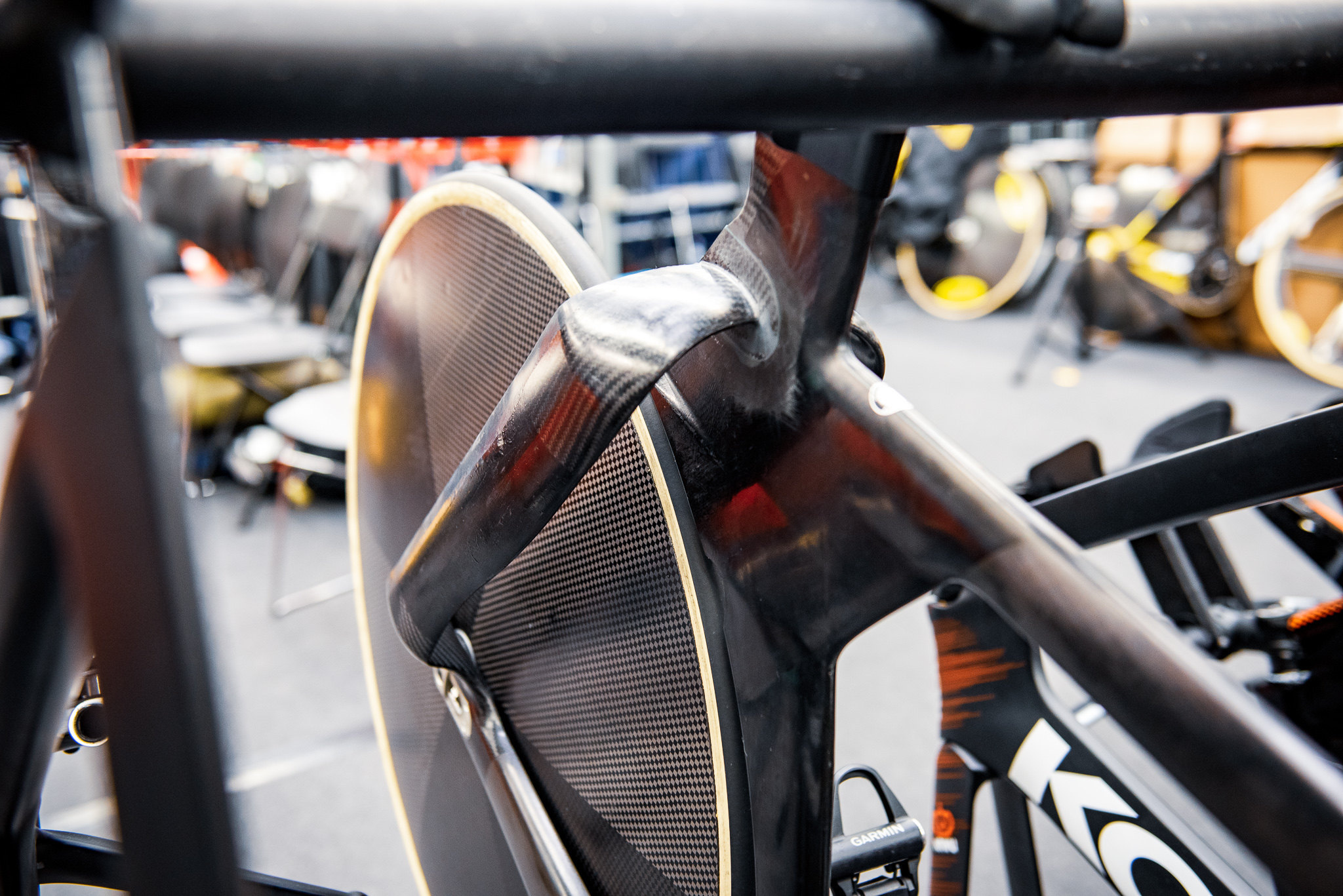
Japanese V-IZU TCM track bike
Moving onto the Japanese camp, and although we have much less to go on in terms of detail, there are still a few interesting design features we can glean.
The paintwork, of which there is none on this raw-carbon prototype-looking machine, gives nothing away as to the brand behind the bike. However, a UCI sticker on the top tube gives us the UCI frame code, which leads us to the UCI's list of approved frames and forks.
It shows the bike is from a brand called V-IZU, and the bike's model name is the TCM2. The UCI list also shows a V-IZU TCM1, and both were homologated on June 22 of this year.
A Google search of the V-IZU brand brings up nothing of note, and nothing under that same name was used in the Tokyo Olympics, so we're assuming this is either a new brand to hit the market, or perhaps a bike designed by the Japanese national federation, similar to Team GB's bike developed by the UK Sports Institute ahead of 2012. The name's likeness to the Izu Velodrome in Tokyo would back up this theory, but we're unsure.
In terms of the bike's design, it's another with wide-stance forks and seat stays, which despite becoming more common as evidenced by this very story, still looks radical by comparison to traditional narrow-legged track bikes such as the aforementioned Canyon, the Stromm that we uncovered earlier in the year, or the new BMC Trackmachine (more on that below).
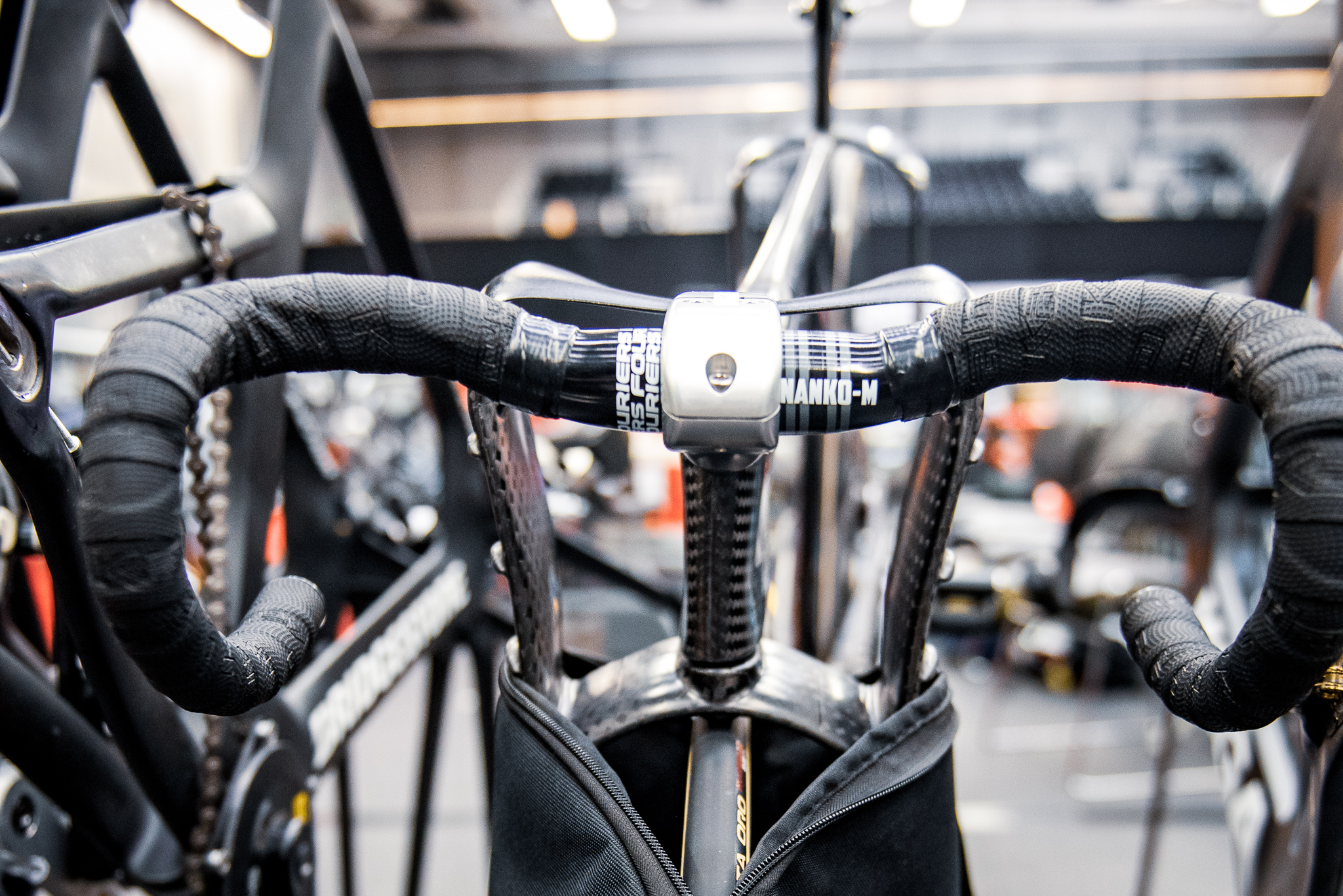
Unlike the Look P24, the fork blades on this prototype follow the Hope x Lotus school of design, continuing upwards beyond the traditional crown position. The resulting design is that of a double crown. It still meets the head tube both from above and below, but with the steerer tube passing through the head tube, rather than in front.
When Hope announced the HB.T in 2019, it claimed the wide-stance fork leg design technique broke up the airflow before it hit the rider's much-less-aerodynamic legs behind, meaning that the legs could pass through it more easily, thus reducing their drag. We'd speculate that this additional material engulfing the head tube from above would also increase front-end stiffness and lead to improved power transfer when wrenching on the bars, as track sprinters especially are prone to doing.

Interestingly, the forks also have what appear to be air-smoothing guides on the outer face of the legs.
Atop the fork, the images we've seen show the bike in a bunch racing setup, with dropped handlebars, however like the Look and the Hope, it appears this can also be swapped for a pursuit handlebar.
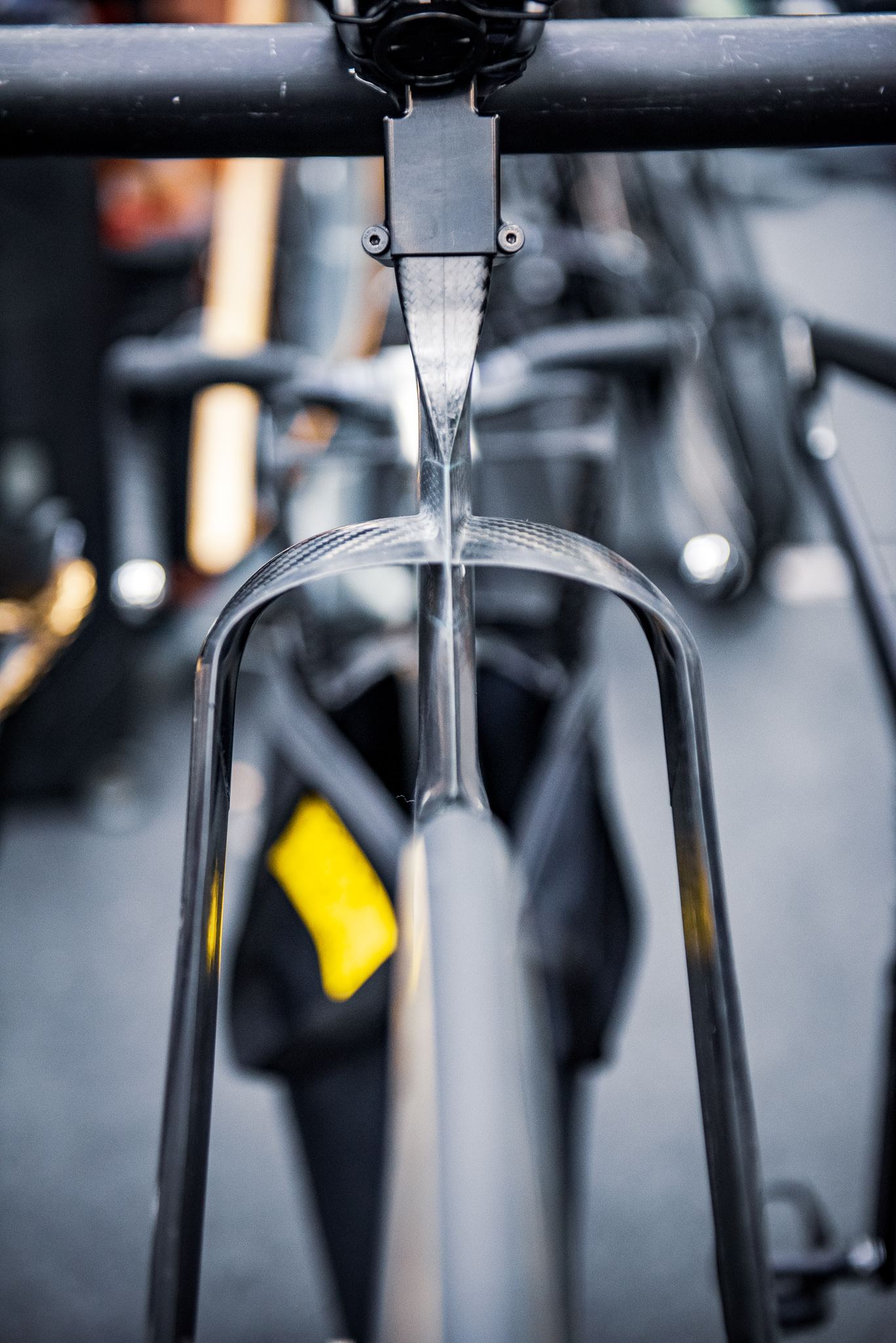
At the rear, wide-stance seat stays are also featured, although there's much less trickery here with regards to adjustment or two-pronged seatposts. The stays are approximately the same width as the forks and the rider's legs, and they return inwards in line with the top of the horizontal top tube. Once again, it is a seatmast with a topper, rather than a seat tube with an internal seatpost, but this is more traditional in shape and construction.
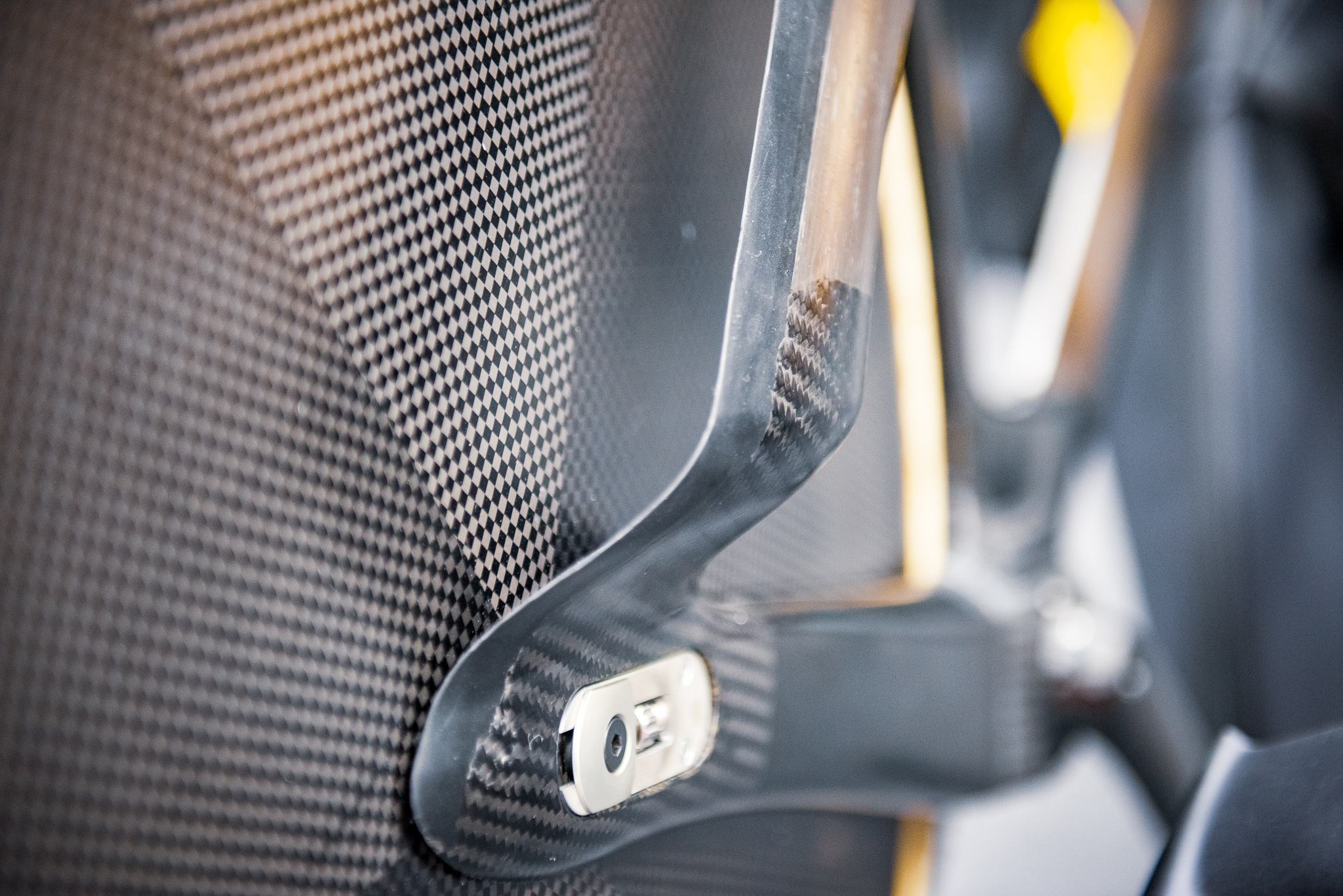
The area surrounding the rear dropouts have been smoothed significantly, too.
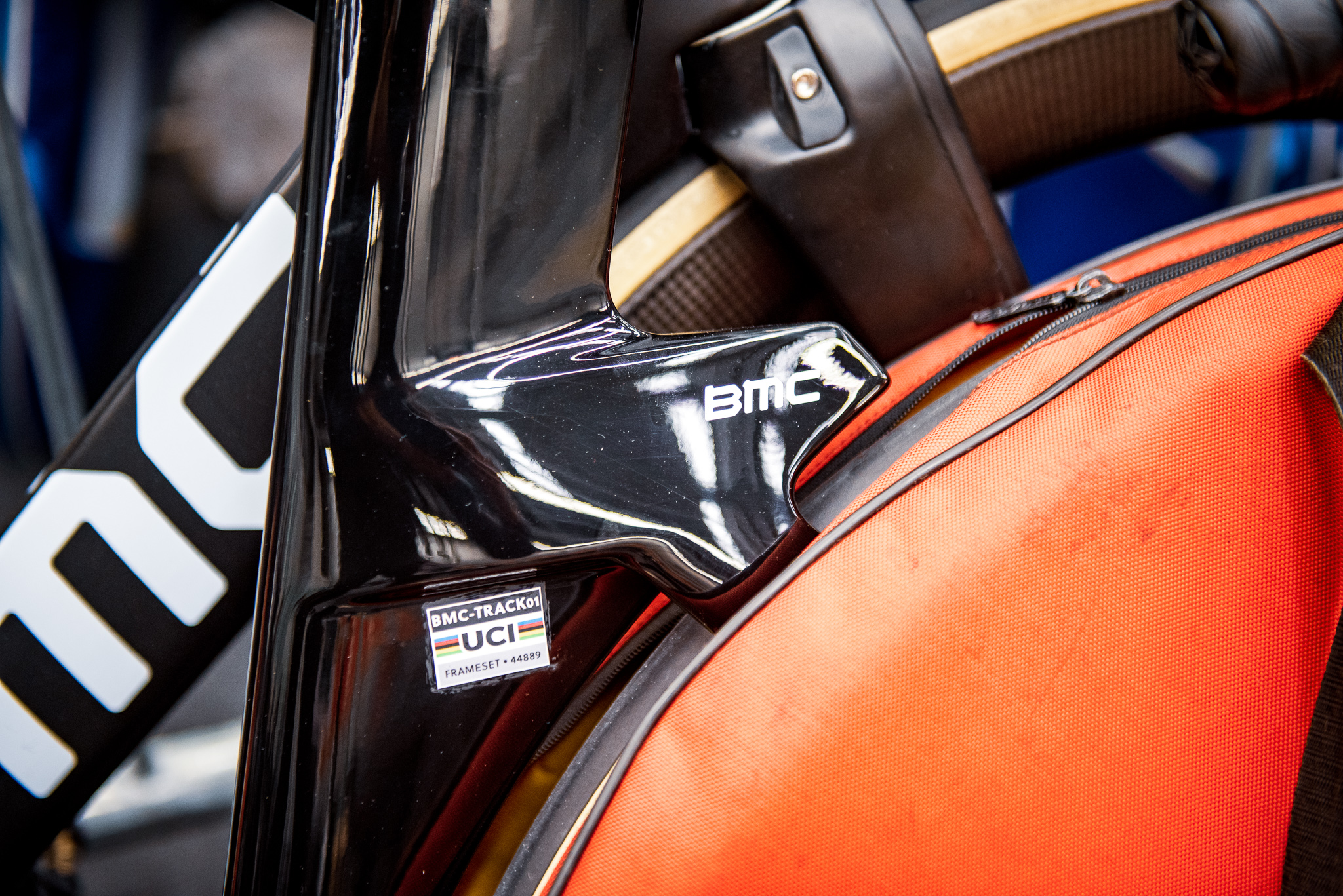
New BMC Trackmachine
Finally, it appears there is also a new BMC track bike on the way, courtesy of this new bike found in the Swiss camp. The UCI sticker on the seat tube shows the code BMC-TRACK01, which having dug through the UCI's list of approved frames and forks, tells us this is a new version of the Trackmachine, homologated by the UCI on July 15. It also reveals that the bike will come in three sizes, from S to L.
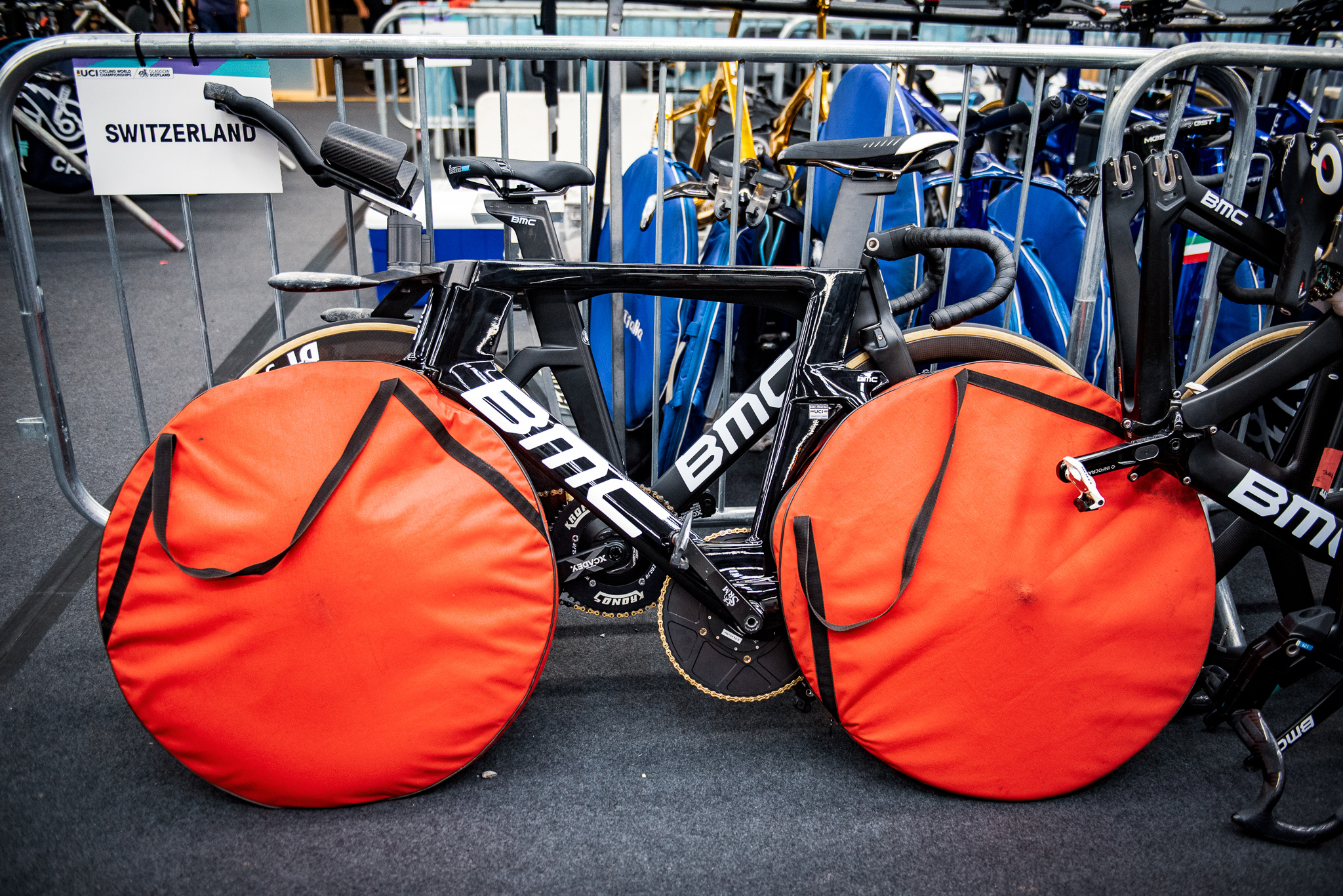
It doesn't look wildly different from the existing Trackmachine, but despite being partially covered by wheel bags, we've spotted a couple of interesting points.
The seat tube junction now includes an additional section that protrudes rearward. We're unsure of its exact purpose but could speculate that it helps to direct turbulent airflow rearward, similar to how a diffuser would work.
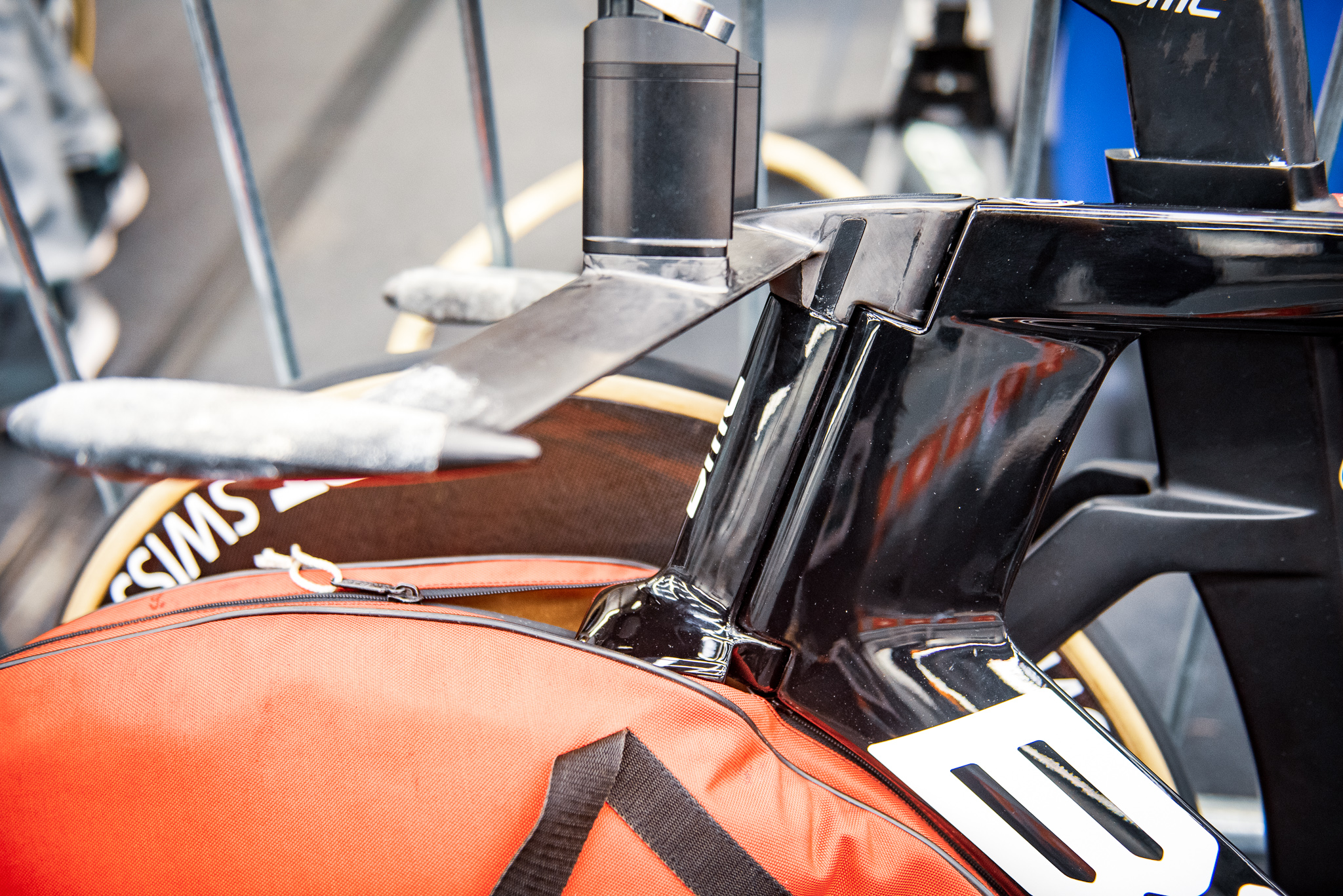
It also features a slightly adjusted front end, with the bayonet-style head tube connection getting a larger notch at the top, bringing the top of the cockpit in line with the top of the top tube an additional aero benefit.

Josh is Associate Editor of Cyclingnews – leading our content on the best bikes, kit and the latest breaking tech stories from the pro peloton. He has been with us since the summer of 2019 and throughout that time he's covered everything from buyer's guides and deals to the latest tech news and reviews.
On the bike, Josh has been riding and racing for over 15 years. He started out racing cross country in his teens back when 26-inch wheels and triple chainsets were still mainstream, but he found favour in road racing in his early 20s, racing at a local and national level for Somerset-based Team Tor 2000. These days he rides indoors for convenience and fitness, and outdoors for fun on road, gravel, 'cross and cross-country bikes, the latter usually with his two dogs in tow.